The metro system of Mexico City is a breeze. For those who don’t speak or read Spanish, the lines are colour-coded and numbered, and each stop has a picture of an animal or insect. All you need to know is the stations at either end of the line to determine which direction you want to travel in. So in 15 minutes we were in the Zócalo – the gigantic square in the Centro Historico (formally known as the Plaza de la Constitución). It’s the third largest square in the world, after Beijing’s Tiannamen Square and Moscow’s Red Square.
Palacio Nacional
The Palacio Nacional dominated the entire eastern side of the square, and it was here that we decided to start our day. Armed guards stood at the entrance and gestured to the metal barricades where we were to line up. There was only one person ahead of us, but they appeared to be only letting in a set number of visitors at a time so we joined the ‘queue’. We didn’t have long to wait to get in, but I held us up starting our visit by having to go back to the bag check room three times in quick succession for things I realised I needed – the young security guard found me very amusing.
My capacity for causing mirth in others continued as we searched for the section of the palace containing the Museum for Benito Juarez (the president of Mexico for five terms, 1858-1872). I asked a staff member in terribly broken Spanish where the Benito Juarez Museo was – it was supposed to be La Museo Benito Juarez, and my back to front speech turned it into something hilarious! No idea why, but all three Spanish speakers were guffawing, and we were laughing at their amused responses. Well, thanks to their clear directions, we found La Museo Benito Juarez. Tucked into a second floor corner of the palace, the museum contained glass cabinet displays of important memorabilia and written text explanations; the most important document being the original copy of the 1857 constitution. There were also some rooms with original furniture and bits and pieces on display as they would’ve been in Juarez’s time. Am fond of museum content presented as it would’ve been “in the day” – I love being able to imagine what it was like in that very room when its famous inhabitant was there.
As with nearly every public building in Mexico City, there is the work of Diego Rivera. The Palacio Nacional contains one of his masterpieces; México a Través des los Siglos is a vibrant history of the Mexican people, from pre-Hispanic times through the Mexican revolution. This mural surrounds the stairwell of the central courtyard, combining “an unbelievable wealth of detail with savage imagery and a masterly use of space” (Rough Guide to Mexico). Sitting enthralled at the foot of this mural was a group of primary school children. They were having the story in the painting explained to them, and they were so into it – calling out, talking over each other in their enthusiasm. Delightful.
Were glad to have visited the Palacio Nacional relatively early in the day. When we were leaving, the line outside had grown considerably, and it looked like the visitors had a significant wait in the sun before entering.
Catedral Metropolitana
On the north side of the plaza is the largest cathedral in Latin America – Catedral Metropolitana. Since Mexico City was basically built on a swamp, there is a definite lean to this structure, despite numerous attempts to stabilise it. It is impressive in its size and blended architectural styles: Spanish Baroque façade and Neo-classical dome and bell-towers. It was begun in 1525 and completed in 1813. I found it to be a little dark and gloomy inside, and so did not tarry long. There is a small (ish) church alongside it that caters to the everyday needs of the city – Segrario, which, despite a similar “heaviness” to the architecture, is much more welcoming and filled with light than the cathedral.
Gran Hotel Ciudad de Mexico
We headed to the famous Gran Hotel Ciudad de Mexico to check out its glorious Tiffany stained glass atrium ceiling and gilded cage lifts. Even on an overcast day, the colours were beatific, and the plush, circular bench seats in the lobby were perfect to slump into and gaze up at the paned glass. The finches in the large twin birdcages that flanked the entrance to the lobby provided the finishing touches to the fantasy of a by-gone era of opulence.
The Madero
The world outside provided more sensory delights as we walked west along the Madero (the pedestrian street). We found a vegetarian restaurant called Los Vegetarianos (upstairs), which offered a very generous meal of the day. There was so much food included, but we weren’t sure about the etiquette of sharing one of these extravaganzas between the two of us, so we instead went with a couple of regular mains and some coronas (discovered afterwards from chats with friends that sharing a meal of the day would’ve been fine, oh well, next time). The meal was excellent, and the sun-drenched open balcony windows gave us the perfect perch to people-watch. (It was also nice to notice after this visit that the photograph above our bed in the Lafayette Suite at The Red Tree House is of that very section of the Madero).
The Madero stroll brought us to two architectural gems – Palacio de Iturbide and Casa de los Azulejos. The Palacio de Iturbide (also known as Palacio Cultural Banamex) has a late 18th century Baroque façade and was built for nobility in 1821. It now houses art exhibits from the bank’s extensive art collection in its columned and arched atrium. The works on display when we popped in were extraordinary terracotta sculptures of various figures and faces; fluid movement captured in clay.
The 16th century Casa de los Azulejos (House of Tiles) is so named for the covering of blue and white tiles imported in 1737 from China to Mexico. It now houses a branch of the Sanborns department store chain, and feels like it is still in the 1950s with its counter tops and separate rooms for different departments (although the nostalgic upstairs bar is not something you would normally see in Myer or DJs in Australia, no matter the era!)
Palacio de Bellas Artes
From there it was only a short block to the Palacio de Bellas Artes, the gigantic and beautiful white and gold wedding cake that is probably Mexico City’s most recognised building. The exterior is primarily Neoclassical and Art Nouveau, and the interior is primarily Art Deco. After drooling over both exterior and interior (you can’t beat the gorgeous Art Deco period for this), we savoured the museum, which is on the higher floors of the cultural centre. More of Diego Rivera’s murals are found here (that man’s work is EVERYWHERE in Mexico City!), including the famous piece that was commissioned for the Rockefeller Centre in New York. The problem the tycoon had with this piece was that Diego’s communist leanings were not at all hidden, not only going so far as to have the rich portrayed as hard-drinking, gambling, capitalist thugs, but by actually featuring a socialist flag-carrying Lenin rallied by workers behind him. You would think JD would check out the content of Rivera’s work before commissioning a mural! So Rockefeller had the mural destroyed and Diego recreated it here in Mexico City. Viva la revolucion, baby!
After happy hour at The Red Tree House, our evening plans took us back to the city centre to see the Folklorico Ballet at the Bellas Artes. We had plenty of time before curtain up, so we went for a walk down Madero to partake in a little Christmas joy – this took the form of fake snow being pumped into the street. It may have been a little naff, but the looks on the faces of those around us were pretty wonderful…and that’s what it’s all about, isn’t it?
The Bellas Artes is a wonderful venue in which to see any performance. After savouring again the eclectic design palate we were introduced to earlier in the day, we once more lingered over the murals on so many of the walls of the foyer and balconies. But it was moving into the theatre itself that revealed the pièce de résistance – the glass ‘curtain’ from Tiffany’s New York. This coloured glass landscape of the Valley of Mexico comprises over a million pieces of glass. And when lit from behind, it rivals any hallowed stained glass window.
The Folklorico Ballet was a lot of fun – the dancers, musicians/singers and costumes were all impressive in their quality and presentation. The ballet dances and musical pieces showcased the various regions and folk music of Mexico, including traditions of Mesoamerican culture (photography is encouraged). Unfortunately, the performers were let down by a very ordinary sound system. Shame, really, because it was the one production value that was lacking, and they all deserved better.
Our Mexico City story continues…
Read our full Mexico City story here:
Part 1: Bosque de Chapultepec and its museums
Part 2: Diego Rivera and Frida Kahlo
Part 3: San Angel to Coyoacan
Part 4 (current): Centro Historico
Part 5: Teotihuacan
Mexico City Accommodation: The Red Tree House
Click on any image below to view as gallery
- Sculptures of Mayan women, National Art Museum, Mexico City
- Painted ceiling in National Art Museum, Mexico City
- ‘The Torture of the Last Aztec Emperor by the Conquistadors,’ National Art Museum, Mexico City
- Detail of Columbus landing sculpture, National Art Museum, Mexico City
- Sculpture of Columbus landing, National Art Museum, Mexico City
- Statue of Christopher Columbus in the National Art Museum, Mexico City
- Diego Rivera’s Rockefeller mural, Palacio de Bellas Artes, Mexico City
- Black marble staircase, Palacio de Bellas Artes, Mexico City
- Palacio de Bellas Artes from the Eastern corner, Mexico City
- Jaywalker near Palacio de Bellas Artes, Mexico City
- Blue and white tiles of Casa de los Azulejos (House of Tiles), Mexico City
- Art Deco foyer of the Palacio de Bellas Artes, Mexico City
- Palacio de Bellas Artes
- Nic and Al and the view down the Madero from Casa de los Azulejos (House of Tiles), Mexico City
- Nic and John at the Casa de los Azulejos (House of Tiles), Mexico City
- Looking down to the restaurant in Casa de los Azulejos (House of Tiles), Mexico City
- Atrium of Casa de los Azulejos (House of Tiles), Mexico City
- Casa de los Azulejos (House of Tiles), Mexico City
- Torsos, Palacio Cultural Banamex, Mexico City
- Blowing in the wind, Palacio Cultural Banamex, Mexico City
- Bust at Palacio Cultural Banamex, Mexico City
- Horse sculpture at Palacio Cultural Banamex, Mexico City
- Stuffed avocados at Los Vegetarianos, Mexico City
- Nic waiting for lunch at Los Vegetarianos, The Madero, Mexico City
- Close up of the ceiling of Gran Hotel Ciudad de Mexico
- Tiffany glass ceiling of Gran Hotel Ciudad de Mexico
- Art installation, Zocalo, Mexico City
- Nuns in the Catedral Metropolitana, Mexico City
- Bronze statue, Catedral Metropolitana, Mexico City
- Sad and tired Jesus statue, Catedral Metropolitana, Mexico City
- Interior Catedral Metropolitana, Mexico City
- Hauling, Mexico City
- Bedroom of La Museo Benito Juarez, Palacio Nacional, Mexico City
- Drawing room of La Museo Benito Juarez, Palacio Nacional, Mexico City
- Music room in La Museo Benito Juarez, Palacio Nacional, Mexico City
- Flower in the gardens of Palacio Nacional, Mexico City
- Stairwell of Palacio Nacional, Mexico City
- Parliamentary chamber, Palacio Nacional, Mexico City
- Trade deal in ‘Mexico Through the Ages’, Palacio Nacional, Mexico City
- Teotihuacan section of ‘Mexico Through the Ages’, Palacio Nacional, Mexico City
- Courtyard fountain, Palacio Nacional, Mexico City
- John by the mural ‘Mexico Through the Ages,’ Palacio Nacional, Mexico City
- Nic by the mural ‘Mexico Through the Ages,’ Palacio Nacional, Mexico City
- Rivera’s mural ‘Mexico Through the Ages’, Palacio Nacional, Mexico City
- Detail of Rivera’s mural ‘Mexico Through the Ages’, Palacio Nacional, Mexico City
- Central courtyard, Palacio Nacional, Mexico City
- Arches at the Palacio Nacional, Mexico City
- Pedestrian side street near Palacio Nacional, Mexico City
- Spire of Catedral Metropolitana, Mexico City
- Roasted corn for breakfast, Mexico City
- Mexico City Metro
- Palacio de Bellas Artes, night, Mexico City
- Christmas ‘snow’ being pumped into Madero, Mexico City
- Crossing the street to get to the Bellas Artes, Mexico City
- Tiffany glass ‘curtain’ at the Bellas Artes, Mexico City
- Stained glass domed ceiling, Bellas Artes, Mexico City
- Revolution chorus line in the Folklorico Ballet, Mexico City
- Mariachi band at the Folklorico Ballet, Mexico City
- Rifle choreography, Folklorico Ballet, Mexico City
- White lace dressed soloist in the Folklorico Ballet, Mexico City
- Dancing pair in white, Folklorico Ballet, Mexico City
- Panorama of the stage, Folklorico Ballet, Mexico City
- Beaming smiles and dancing feet, Folklorico Ballet, Mexico City
- Gigantic masks, Folklorico Ballet, Mexico City
- The Mesoamerican culture of Mexico in dance, Folklorico Ballet, Mexico City
- Deer dancer, Folklorico Ballet, Mexico City
- Harpist in the Mariachi band, Folklorico Ballet, Mexico City
- Chorus dancing, Folklorico Ballet, Mexico City
- Swirling red skirts, Folklorico Ballet, Mexico City

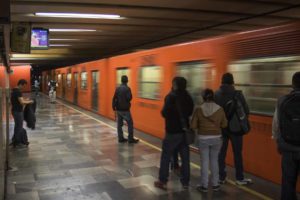
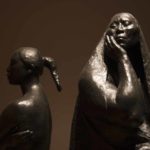
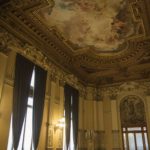
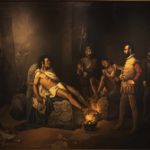
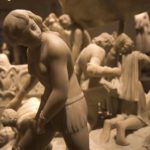
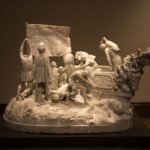
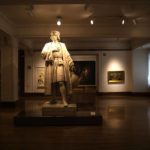
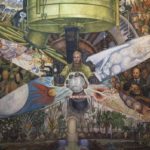
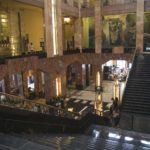
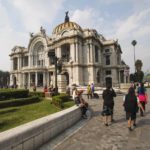
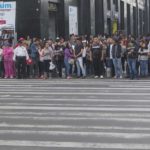
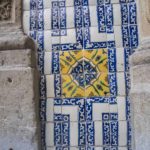
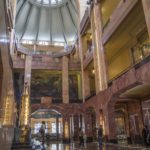
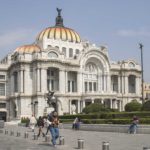
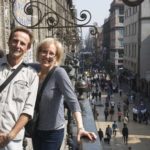
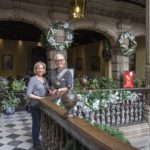
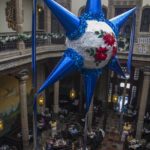
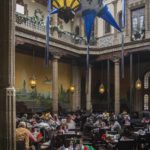
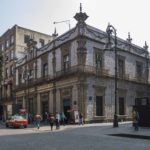
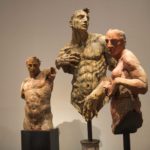
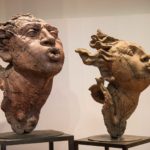
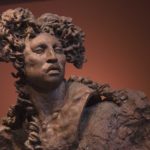
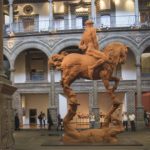

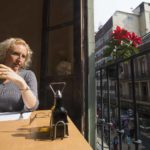
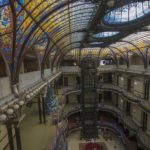
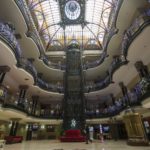
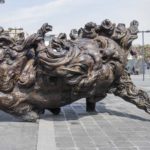
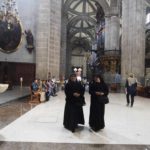
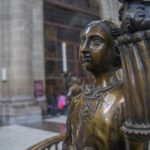
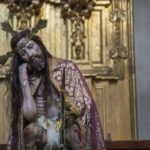
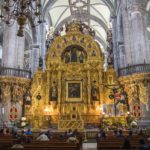
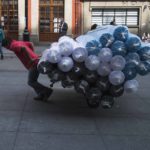
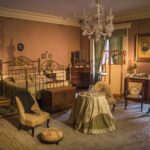
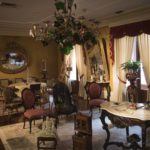
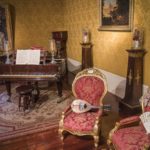

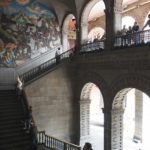
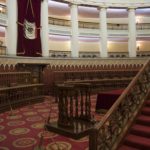
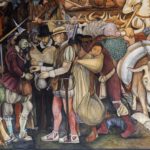
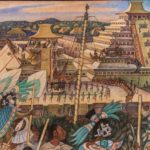
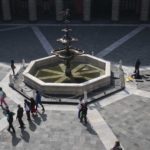
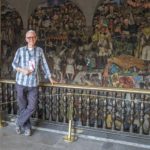
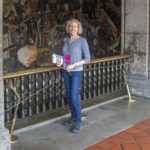
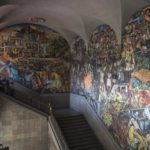
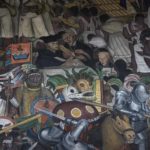
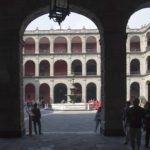
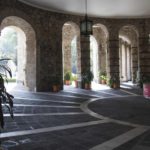
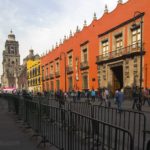
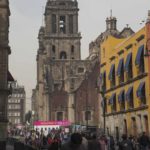
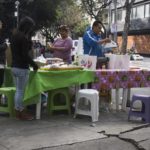
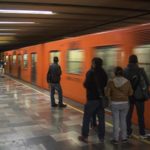
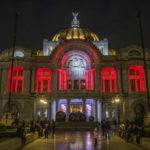
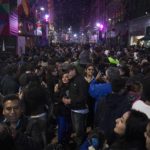
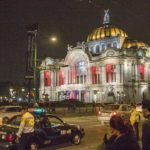
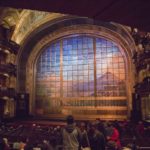
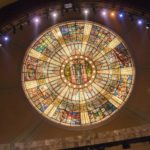
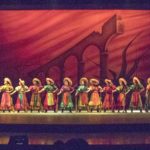
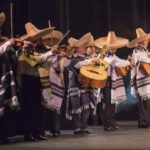
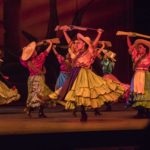
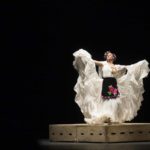
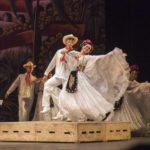
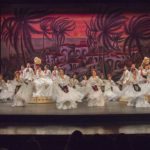
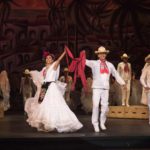
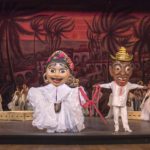
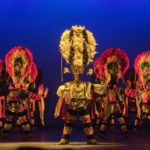
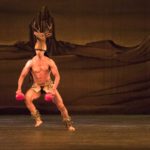
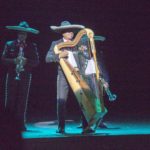
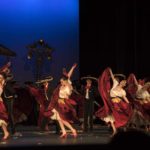
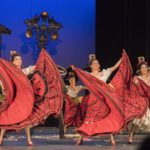
Pingback: Mexico City (Part 3) – San Angel to Coyoacan – bontaks travels
Pingback: Mexico City (Part 5) – Teotihuacan – bontaks travels
Pingback: The Red Tree House, Mexico City – bontaks travels